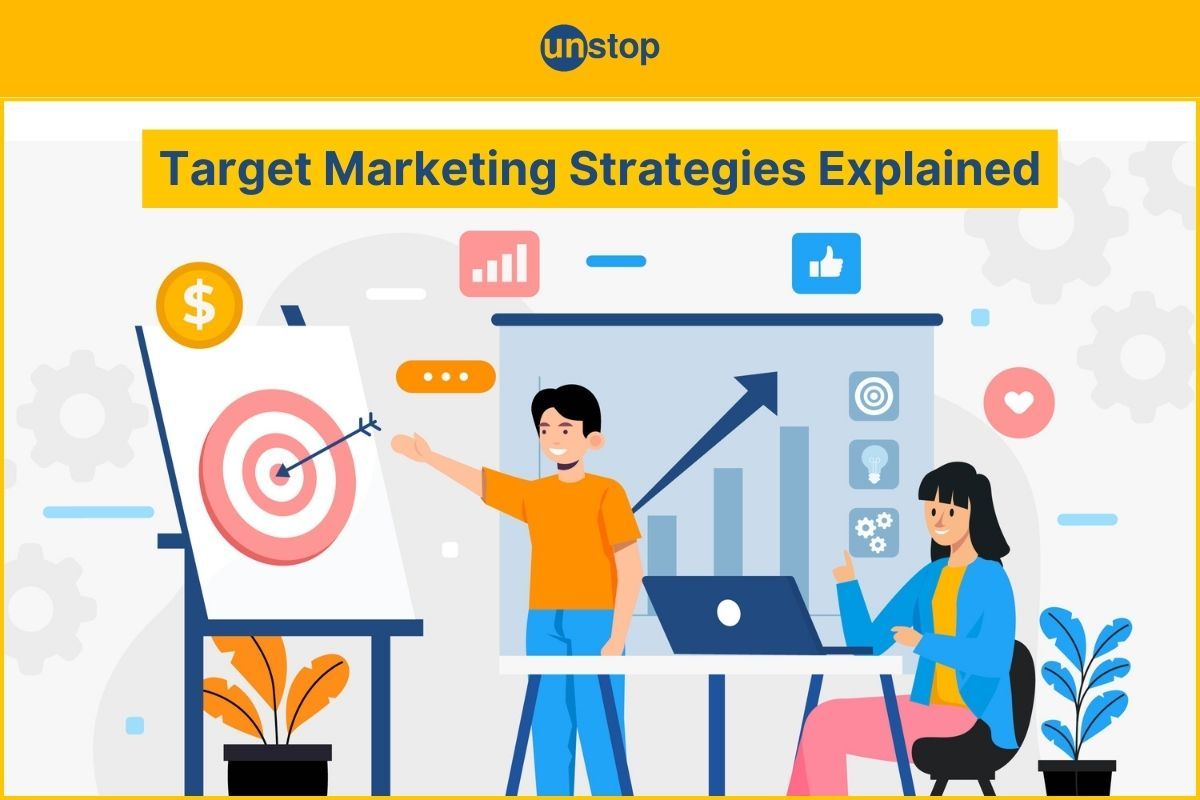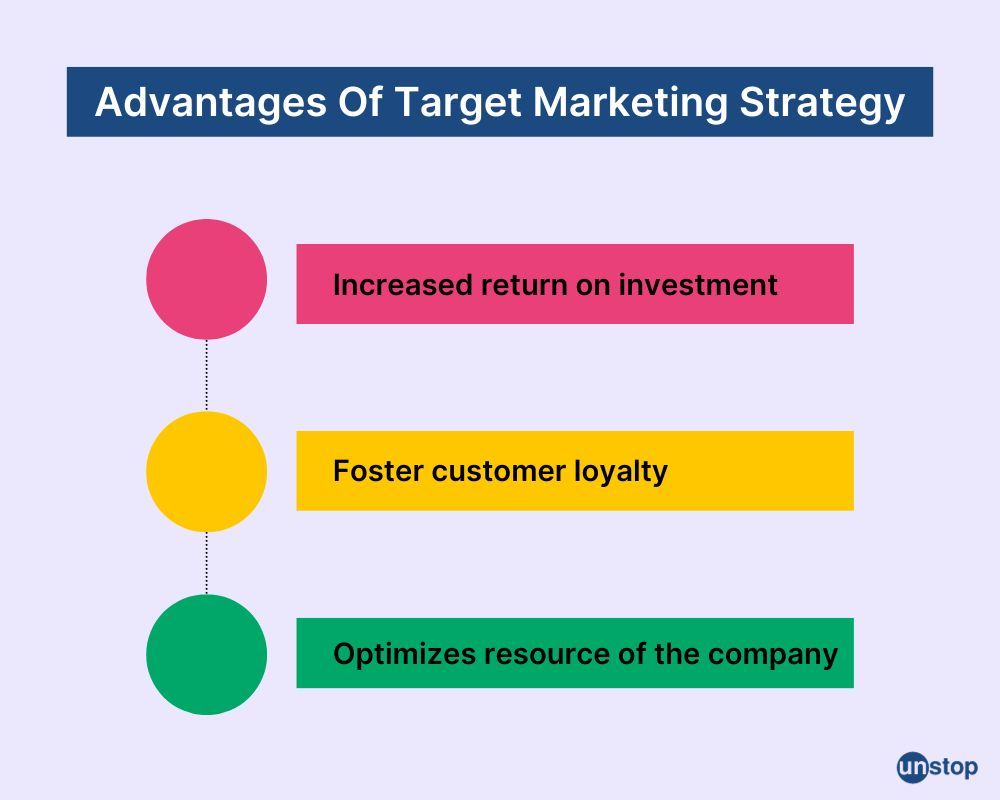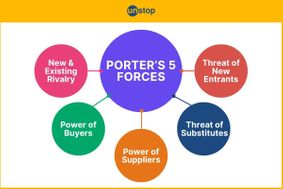- What is a Brand & Why is it Important?
- Elements of a Brand: Mission, Vision, and Values
- Types of Brands and their Significance
- Branding Strategies: Private, Multiproduct, and Mixed
- Brand Image and Its Impact on Perception
- Building a Strong Brand
- Frequently Asked Questions
- Understanding Brand Equity: Definition and Elements
- Importance of Brand Equity
- Evolution Of Brand Equity In The Digital Age
- Brand Equity in the Global Marketplace
- Measuring Brand Equity: Metrics & Methods
- Managing Brand Equity: Salient Elements
- Building & Managing Brand Equity: Best Practices
- The Future of Brand Equity
- Conclusion
- Frequently Asked Questions
- What is Brand Management?
- Importance of Brand Management
- Benefits of Effective Brand Management
- Principles of Brand Management
- Strategies for Successful Brand Management
- Brand Management vs. Marketing
- Conclusion: The Power of Brand Management
- Frequently Asked Questions
- Importance of Brand Image in Marketing
- Key Elements of a Successful Brand Image
- Brand Image vs. Brand Identity: Key Differences
- Measuring and Monitoring Brand Image
- Strategies for Maintaining and Enhancing Brand Image
- The Power of a Positive Brand Image
- FAQs
- What is Brand Awareness and its Importance?
- Benefits of Brand Awareness
- Brand Awareness Strategy: Some Tried & Tested Methods
- Some Creative Ways to Boost Brand Awareness
- Significance of Brand Awareness
- Conclusion
- Frequently Asked Questions
- Porter's 5 Forces Model: What Is It?
- Porter's 5 Forces Model: How To Use It?
- Common Barriers to Entry
- Evaluating Suppliers' Negotiating Power
- Understanding the Bargaining Power of Buyers
- Analyzing Threat of Substitute Products or Services
- Rivalry amongst Competitors (Old & New)
- Drawbacks of the Five Forces Model
- Conclusion
- Frequently Asked Questions
- How Well Do You Know Porter’s 5 Forces? Take A Quiz!
- What is Buying Motive?
- Types Of Buying Motives
- Importance Of Buying Motives
- Six Universal Buying Motives
- Identifying Buyer's Motives
- Utilizing Buying Motives In Sales
- Challenges In Interpreting Buying Motives
- Frequently Asked Questions (FAQs)
- 💸 Think You Know Buying Motives? Take A Quiz!
- Understanding the Elements and Importance of Brand Equity
- What are brand equity models?
- Comparing Keller's and Aaker's brand equity models
- Real-world examples of brand equity in action
- Strategies for building strong brand equity
- Key takeaways on brand equity models
- FAQs
- Mastered Brand Equity Models? Prove It!
- What Is Brand Positioning?
- The Importance of Brand Positioning for Businesses
- Creating A Brand Positioning Strategy: Step-By-Step Process
- Measuring the Success of Your Brand's Positioning
- Examples of Strong Brand Positioning in the Market
- Types of Brand Positioning Strategies
- Social Media Engagement: A Key Positioning Strategy
- What Makes a Good Brand Positioning Strategy?
- Conclusion
- Frequently Asked Questions
- Quick Quiz to Test Your Knowledge of Brand Positioning!
- Brand Personality: Definition & Importance
- How to Define Your Brand Personality?
- Choosing Your Brand Personality Attributes
- Dimensions of Brand Personality Framework: The Aaker Model
- Incorporating Core Values Into Your Brand Personality
- Examples of Brand Personalities in Action
- Conclusion
- Frequently Asked Questions
- Brand Personality Quiz– Let's Go!
- What is Brand Identity?
- What are the Key Components of Brand Identity?
- Importance & Benefits Of Brand Identity
- Importance of Unique Visual Elements in Brand Identity
- Communication Style and Tone of Voice in Brand Identity
- Steps on How to Create a Brand Identity
- Brand Identity Example- Coca-Cola
- Examples of Strong Brand Identities in Different Industries
- Consistency in Online and Offline Branding
- Conclusion
- Frequently Asked Questions (FAQs)
- Think You Know Brand Identity? Take A Quiz!
- Brand Identity Prism: Understanding The Concept
- Role Of Culture In Brand Identity Prism
- Brand Identity Prism: Visualizing The Sender & Receiver
- Benefits Of Brand Identity Prism
- Examples Of Brand Identity Prism In Action
- Brand Identity Prism: Key Takeaways
- Frequently Asked Questions
- Take This Brand Identity Prism Quiz!
- What is Market Segmentation?
- Importance of Market Segmentation
- The Market Segmentation Process
- Types of Market Segmentation
- Common Challenges in Implementing Market Segmentation
- Overcoming Challenges in Market Segmentation
- Conclusion: Understanding The Impact
- Frequently Asked Questions (FAQs)
- Test Your Market Segmentation Knowledge– Take This Quiz!
- What is Brand Loyalty? Meaning & Significance
- Characteristics of Brand Loyalty
- Measuring and Tracking Brand Loyalty
- Importance of Brand Loyalty for Companies
- Brand Loyalty Examples and Types
- Strategies for Building Brand Loyalty
- Differentiating Brand Loyalty from Customer Loyalty
- Conclusion: The Power and Importance of Brand Loyalty
- Frequently Asked Questions
- Think You Know Brand Loyalty? Take A Quiz!
- Brand Extension Meaning
- Brand Extension Types
- Understanding Brand Line Extension vs. Brand Extension
- The Impact and Potential of Brand Extension
- Successful and Unsuccessful Brand Extensions Examples
- Summing Up
- Frequently Asked Questions
- Quiz– Test Your Brand Extension!
- Step-by-step guide on how to build a brand from scratch
- Benefits of a Strong Brand
- Examining Successful Brand-Building Examples
- Summing up
- Frequently Asked Questions
- Know How to Build a Brand? Prove it With This Quiz!
- What is Marketing Mix?
- Understanding the 4 Ps of Marketing
- The Seven Ps of Marketing
- Implementing the Marketing Mix in Business
- Amul: Example of Successful Marketing Mix Implementation
- Exploring Alternative Marketing Mix Models
- Conclusion
- Frequently Asked Questions (FAQs)
- Mastered the Marketing Mix! Test Your Knowledge Now
- Defining Brand Value and its Importance
- Measuring Brand Value
- Factors that Make a Brand Valuable to Customers
- Examples of Brand Value from Real World
- Brand Value Versus Brand Equity
- The Impact of Brand Value on Business Marketing Strategies
- Conclusion: The Significance of Brand Value
- Frequently Asked Questions
- How Much Do You Know About Brand Value? Take This Quiz!
- Definition Of Co-Branding
- Different Types Of Co-Branding
- Benefits & Advantages Of Co-Branding
- Strategies For Successful Co-Branding Partnerships
- Notable Successful Co-Branding Examples
- Factors Influencing Co-Branding Success
- Frequently Asked Questions (FAQs)
- Co-Branding Quiz: Test Your Expertise!
- What is a Target Market?
- Importance of Target Market: Why Do We Need It?
- Types of Target Market
- The Target Marketing Process
- Primary Research for Target Markets
- Leveraging Target Market Segmentation for Sales
- Conclusion
- Frequently Asked Questions (FAQs)
- 🎯 Do You Know Your Target Market? Take the Quiz!
- Importance of Understanding Consumer Decisions
- Traditional vs Contemporary Consumer Behaviour Model
- Traditional Models of Consumer Behaviour
- Learning Model of Consumer Behaviour
- Psychoanalytical Model of Consumer Behaviour
- Sociological Model of Consumer Behaviour
- Economic Model of Consumer Behaviour
- Contemporary Models of Consumer Behaviour
- EKB Model of Consumer Behaviour
- Black Box Model of Consumer Behaviour (Stimulus-Response Consumer Behaviour Model)
- Howard Sheth Model of Consumer Behaviour
- Hawkins-Stern Model of Consumer Behavior
- Webster and Wind Model
- Nicosia Model of Consumer Behaviour
- How to Select a Consumer Behaviour Model?
- Final Remarks
- Frequently Asked Questions
- 🛍️ Consumer Behavior Models Quiz: Test Your Knowledge!
- What is a Consumer?: Definition & Role
- The Evolution of the Term "Consumer"
- Consumer Behavior
- Different Types of Consumers
- Consumers' Motivation for Buying
- Relationship Between Businesses and Consumers
- Consumer Rights in India
- Current Challenges for Consumers
- The Future of Consumers in a Digital Age
- Final Remarks
- Frequently Asked Questions (FAQs)
- 🛍️ Consumer or Customer? Test Your Knowledge!
- What is a Market Structure?
- Types of Market Structures
- How Markets Work
- Significance of Different Types of Market
- Summing Up
- Frequently Asked Questions
- 🏪 Market Structures 101: Take the Quiz!
- Understanding the Concept of Corporate Branding
- Importance and Advantages of Corporate Branding
- Researching Competitor Brands
- Implementing Effective Corporate Branding Strategies
- Successful Corporate Branding Examples: Alphabet, Walmart & SAP
- Impact and Success of Corporate Branding
- Conclusion
- Frequently Asked Questions
- 🏢 Corporate Branding Quiz: Test Your Knowledge!
- Perception Management: Meaning & Importance
- Process Of Perception Management
- Influencing & Shaping Perceptions
- Strategies For Perception Management
- Technology In Perception Management
- Branding & Control In Perception Management
- Customer Feedback For Perception Improvement
- Frequently Asked Questions (FAQs)
- 🧠 Perception Management Quiz: How Well Do You Know It?
- Definition & Importance Of Target Marketing
- Advantages & Disadvantages Of Target Marketing Strategies
- Examples Of Target Marketing Strategies
- Creating An Effective Target Market Strategy
- Segmentation: Key To Targeted Marketing
- Utilizing Social Media For Targeted Marketing
- Frequently Asked Questions ( FAQs)
- 🎯 Target Marketing Strategies Quiz: Test Your Knowledge!
- Definition and Significance of Brand Association
- Brand Association Types
- Successful Brand Association Examples
- Strategies for Building Strong Brand Associations
- Overcoming Negative Brand Associations
- Conclusion: Harnessing the Power of Brand Association
- Frequently Asked Questions
- 🔗 Brand Association Quiz: Check Your Brand Knowledge!
- What is Product Positioning?
- Importance Of Product Positioning in Marketing
- Difference between Product Positioning and Brand Positioning
- Types Of Product Positioning
- Main Components Of Product Positioning
- Successful Product Positioning Strategies
- Understanding the Product Positioning Process
- Examples Of Effective Product Positioning
- Conclusion
- Frequently Asked Questions (FAQs)
- 🔥 Product Positioning Quiz: Test Your Marketing Smarts!
- How do we define niche market?
- Strategies To Find Your Niche Market
- 7 Examples Of Niche Markets
- Benefits Of Targeting A Niche Market
- Testing Your Product Or Service For Niche Market
- Conclusion
- Niche Market: Frequently Asked Questions (FAQs)
- 🎯 Niche Market Quiz: Test Your Knowledge!
- Importance Of STP In Marketing
- Understanding STP in Marketing Step-by-Step
- Process Of Implementing STP In Marketing
- Examples Of Successful STP Strategies
- Conducting An STP Marketing Analysis
- Choosing Your Marketing Mix
- Strategies For Targeting the Right Audience
- Conclusion
- Frequently Asked Questions (FAQs)
- 🔍 STP in Marketing Quiz: Test Your Knowledge!
- Sales and Marketing: Understanding the Core Concepts
- Key Differences Between Sales and Marketing
- Types of Marketing
- Types of Sales
- Power of Synergy: Sales and Marketing Alignment (Smarketing)
- Frequently Asked Questions (FAQs)
- Definition Of Customer Satisfaction
- Importance Of Customer Satisfaction
- Strategies For Effective Customer Satisfaction
- Measuring Customer Satisfaction
- Customer Satisfaction in Marketing & Sales
- Frequently Asked Questions (FAQs)
- 🎯 Customer Satisfaction Quiz: Are You an Expert?
- Customer Delight Meaning
- Benefits of Customer Delight
- Customer Satisfaction Vs Customer Delight
- Strategies With Customer Delight Examples
- How to Measuring the Impact Of Customer Delight?
- Customer Delight Examples - 3 instances by big brands that won hearts
- Common Mistakes In Customer Delight
- Conclusion
- Frequently Asked Questions (FAQs)
- 🌟 Customer Delight Quiz: Can You Ace It?
- What is a Marketing Plan?
- Types Of Marketing Plan
- What are the Key Components of a Marketing Plan?
- Steps for Effective Marketing Planning
- Crafting Your SEO Content Strategy
- Budgeting & Resource Allocation
- Identifying & Analyzing Competition
- Measuring Success with KPIs
- Importance of Flexibility in Marketing Planning
- Challenges of Marketing Plan
- Marketing Plan vs Business Plan
- Conclusion
- Frequently Asked Questions (FAQs)
- 📊 Marketing Planning Quiz: Test Your Knowledge!
- What is Marketing Control?
- Types of Marketing Control (with Examples)
- Annual Plan Marketing Control
- Profitability Marketing Control
- Efficiency Marketing Control
- Strategic Marketing Control
- Process of Marketing Control
- Techniques Used in Marketing Control
- Frequently Asked Questions
Target Marketing Strategies: Definition, Advantages & Disadvantages

Effective target marketing strategies are essential for businesses looking to reach their intended audience and maximize their marketing efforts. It involves identifying specific segments within a larger market and developing focused marketing tactics to appeal to those segments. This approach allows businesses to understand the unique needs, preferences, and behaviors of their target markets, enabling them to create personalized messages and offers that are more likely to capture attention and drive conversions.
Definition & Importance Of Target Marketing
Target marketing is a strategic approach that focuses on identifying and reaching a specific group of consumers who are most likely to be interested in a product or service. It involves tailoring marketing efforts to meet the needs and preferences of this specific target market. Understanding the importance of target marketing is vital for businesses aiming to succeed in today's competitive landscape.
Definition
Target marketing strategy is an approach that involves dividing the broader market into smaller segments taking into account factors such as demographics, psychographics, behavior, or geographic location. By doing so, businesses can create personalized marketing messages that resonate with their intended audience. This approach allows companies to allocate their resources more effectively by focusing their efforts on those who are most likely to convert into customers. Understanding customer demographics and preferences is a key aspect of target marketing. Demographics include age, gender, income level, education level, occupation, and other characteristics that help businesses determine who their ideal customers are. By analyzing this data, companies can gain invaluable insights regarding the needs and desires of their target market.
Importance
Identifying a specific target market helps businesses refine their messaging by addressing the pain points or desires of their ideal customers. This targeted approach allows for more effective communication and increases the chances of creating a connection with potential buyers. Ascertaining a specific target market is essential for effective marketing campaigns. Rather than trying to appeal to everyone, targeting a specific group allows businesses to craft messages that resonate with their audience on a deeper level. This increases the likelihood of capturing attention and generating interest in what they have to offer.
Moreover, targeting a specific market segment enables businesses to allocate their marketing budget more efficiently. Instead of wasting resources on broad advertising campaigns that may not reach their intended audience, companies can focus on channels and platforms that are most likely to engage their target market. This will eventually result in higher conversion rates and a better return on investment (ROI).
Advantages & Disadvantages Of Target Marketing Strategies
Target marketing strategies have both advantages and disadvantages. Let us study some of the advantages and disadvantages as listed below:

Advantages
Targeted marketing strategies offer several advantages that can greatly benefit businesses.
-
One major benefit is the potential for increased return on investment (ROI). By focusing on the smaller segments of the market, companies can leverage their marketing messages to resonate with the preferences and needs of those particular groups. This personalized approach often leads to higher conversion rates as customers feel a stronger connection to the brand.
-
Another advantage of targeted marketing is the ability to foster customer loyalty. When businesses understand their target audience's preferences and deliver tailored experiences, it creates a sense of trust and satisfaction among customers. This can result in repeat purchases, positive word-of-mouth recommendations, and long-term loyalty.
-
Targeted marketing strategies allow companies to optimize their resources more effectively. Instead of wasting time and money on broad advertising campaigns that may not reach the intended audience, businesses can re-align their efforts to specific segments that are more likely to be interested in their products or services. This targeted approach helps maximize marketing budgets by minimizing wasted resources.
Disadvantages
While there are significant benefits to using targeted marketing strategies, it is important for businesses to also consider potential drawbacks.
-
One drawback is the limited reach that comes with targeting specific segments. By narrowing down the target audience, companies may miss out on opportunities to attract customers from other demographics who could still have an interest in their offerings.
-
There is a risk of alienating non-targeted segments when implementing targeted marketing strategies. If individuals outside the target audience feel excluded or overlooked, it could lead to negative perceptions of the brand or even backlash. It is pivotal for businesses to strike a balance between targeting specific segments while still maintaining inclusivity and considering broader market appeal.
Balancing Advantages & Disadvantages
To create an optimal target marketing strategy, businesses must carefully balance the advantages and disadvantages discussed above. Here are a few key considerations:
Conduct thorough market research: Understanding the preferences, behaviors, and demographics of the target audience is essential for effective targeting. This research can help businesses identify the most profitable segments to focus on while still considering opportunities in other markets.
Personalize marketing messages: Tailor marketing messages to resonate with the target audience, but also ensure inclusivity by avoiding exclusionary language or imagery. It allows businesses to connect with their intended customers while maintaining a broader appeal.
Test and adapt: Continuously monitor and evaluate the effectiveness of targeted marketing campaigns. By analyzing data and customer feedback, businesses can make necessary adjustments to optimize their strategies over time.
Examples Of Target Marketing Strategies
Renowned brands have implemented target marketing strategies with great success, tailoring their messaging to resonate with their specific target audience. These examples demonstrate the effectiveness of precise targeting in terms of sales growth and brand recognition.

Nike
Several brands have utilized target marketing strategies to achieve remarkable results. One such example is Nike, which targeted athletes and fitness enthusiasts through its "Just Do It" campaign. By focusing on the aspirations and determination of their target audience, Nike was able to create a powerful emotional connection that resonated with consumers and led to increased sales.
Spotify
Spotify employs data-driven insights to curate personalized playlists based on users' listening habits and preferences. This targeted approach not only enhances user experience but also encourages continued engagement with the platform.
Airbnb
Airbnb has successfully leveraged target marketing by segmenting its offerings into various categories such as vacation rentals, experiences, and luxury accommodations. This strategic approach has allowed Airbnb to effectively target different customer segments and expand its market reach.
Creating An Effective Target Market Strategy
Developing a comprehensive target market strategy involves several steps that can help businesses effectively reach their desired customer segments. Listed below are some of the important steps for developing an effective target market strategy:
Identifying Key Customer Segments
To begin creating a target market strategy, businesses need to identify the key customer segments they want to target. This can be done by way of analyzing demographic information like age, gender, location, income level, and education. Psychographic factors like interests, values, attitudes, and lifestyle choices are also important considerations. Understanding customer behaviors, such as purchasing habits or product usage patterns, can provide valuable insights.
Once these key customer segments have been identified through thorough research and analysis, businesses can tailor their marketing efforts specifically toward these groups. This allows for a more targeted approach that resonates with the intended audience.
Crafting Personalized Messages
After identifying the key customer segments, it's important to send personalized messages that speak directly to their needs and desires. Generic marketing messages tend to be less effective because they fail to connect with individual customers on a personal level. By comprehending the pain points and motivations of each segment, businesses can develop messaging that addresses specific challenges or aspirations.
Implementation & Evaluation
Once the target market strategy has been developed by identifying key customer segments and crafting personalized messages accordingly, it's time for implementation. The marketing team should execute the plan across different channels using social media, email marketing, print ads, or local marketing strategies.
During the implementation phase, it's important to closely monitor and evaluate the outcome and effectiveness of the strategy. One way to do this is by tracking metrics like website traffic, conversion rates, customer feedback, or sales data. By analyzing these metrics regularly, businesses can make necessary adjustments to ensure their target market strategy is yielding the desired results.
Segmentation: Key To Targeted Marketing
Segmentation is a vital concept in targeted marketing that requires dividing a market into distinct groups or segments based on specific criteria. By understanding the concept of segmentation, businesses can effectively tailor their marketing strategies to reach and engage their target audience. Segmentation allows marketers to identify and categorize different market segments based on various factors such as demographics, geography, psychographics, and behavior. It provides them with a deeper understanding of their customer base and enables them to create more personalized and relevant marketing messages.
Types Of Segmentation Methods
Marketers use various segmentation methods to divide the overall market into smaller, more manageable segments. Some common types of segmentation include:
Demographic Segmentation: This segmentation is carried out based on demographic factors like age, gender, income, occupation, education level, and marital status.
Geographic Segmentation: Segmenting of the market based on geographic variables such as location, climate, population density, or even cultural preferences.
Psychographic Segmentation: Categorizing consumers based on their lifestyle choices, values, attitudes, interests, and personality traits.
Behavioral Segmentation: Dividing the market according to consumer behaviors such as purchasing habits, brand loyalty, usage patterns, or response to marketing stimuli.
Benefits Of Segmentation In Business
Segmentation empowers businesses to customize their products or services specifically for each target segment. Here's how it benefits them:
Enhanced Customer Understanding: Through segmentation analysis, businesses get invaluable insights into the unique needs and preferences of different customer segments. This knowledge enables them to develop products that precisely meet those requirements.
Improved Marketing Communication: By targeting specific segments with tailored messaging that resonates with their motivations and desires, businesses can significantly improve the effectiveness of their marketing campaigns.
Efficient Resource Allocation: Segmenting the market allows companies to allocate their resources, such as advertising budgets and promotional efforts, more efficiently. They can focus on the segments that offer the highest potential for sales and growth.
Competitive Advantage: By catering to specific market segments, businesses can differentiate themselves from competitors who adopt undifferentiated marketing strategies. This differentiation helps build brand loyalty and gain a competitive edge in the market.
Increased ROI: Targeting specific customer segments reduces wasteful spending on broad marketing campaigns that may not resonate with everyone. Instead, businesses can invest their resources where they are most likely to yield a higher return on investment. An example of the ROI can be illustrated with Twitter's ROI.
Segmentation is an essential tool for businesses aiming to maximize their market share and overall success. By understanding their target audience at a granular level, companies can refine their marketing strategies and deliver products or services that truly meet individual customers' needs.
Utilizing Social Media For Targeted Marketing
Today, social media has become an integral part of our lives. It is not just a platform to connect with friends and share pictures but has also become a powerful tool for businesses to connect with their target audience. Let's explore how businesses can leverage social media for targeted marketing.

Image credit: Freepik
Create Targeted Content That Resonates Users
Engaging effectively with your target audience on social media requires some techniques as listed below:
Personalization: Tailor your content specifically to your target market by using language, visuals, and messaging that aligns with their preferences.
Storytelling: Share compelling stories that resonate with your audience's emotions and values. It helps establish an emotional connection between your brand and potential customers.
Visual Appeal: Use eye-catching images or videos in your posts to grab attention in crowded social media feeds.
Influencer Collaboration: Collaborate with influencers who have a strong following within your target market. Their endorsement can significantly boost brand visibility among your desired customer base.
User-generated Content (UGC): Encourage users to create content related to your brand or products/services. UGC helps build trust and authenticity among your target audience.
Determining Effectiveness Of Social Media Campaigns
To determine the success of your targeted marketing efforts on social media, it is essential to track and measure key metrics. Here are some ways to measure the effectiveness of your campaigns:
Reach: Monitor how many people have seen your posts or advertisements. This metric helps gauge the extent of your campaign's visibility.
Engagement: Measure likes, comments, shares, and other forms of engagement on your posts. If the engagement is high, it indicates that your content resonates with your target audience.
Click-through Rate (CTR): Track how many users clicked on links within your social media posts or ads. A high CTR suggests that users find value in what you are offering.
Conversion Rate: Measure how many users took a desired action after going through your social media content like making a purchase or signing up for a newsletter.
Return on Investment (ROI): Analyze the financial impact of your social media campaigns by comparing the cost incurred with the revenue generated.
By regularly analyzing these metrics, businesses can fine-tune their targeted marketing strategies and improve their overall effectiveness in reaching their desired targets through social media platforms.
Conclusion
In today's competitive business landscape, maximizing results through target marketing strategies is indispensable for success. Target marketing allows businesses to focus their efforts and resources on specific segments of the market that are most likely to be of interest in their products or services. By implementing effective target marketing strategies, businesses can effectively increase their chances of success in a crowded marketplace. By focusing on specific segments that are more likely to convert into customers, companies can optimize their marketing efforts and resources for maximum impact. So take the time to understand your target audience thoroughly and tailor your marketing approach accordingly – it will pay off in increased brand visibility, customer engagement, and ultimately higher conversion rates.
Frequently Asked Questions ( FAQs)
1. How do I identify my target audience?
Identifying your target audience requires thorough market research. To begin with, start by analyzing your existing customer base to identify common demographics such as age range, gender, location, etc. Carry out surveys and interviews with your customers to ascertain their preferences and behaviors related to your product or service. Use social media analytics or Google Analytics to gather data on website visitors or followers' demographics and interests.
2. What are some advantages of using targeted marketing strategies?
Targeted marketing strategies offer several advantages for businesses. Firstly, they allow you to focus your resources on reaching those who are most likely to be interested in your offerings, increasing the efficiency of your marketing efforts. Secondly, targeted marketing enables you to create more personalized and relevant messaging, which leads to higher engagement and conversion rates. Lastly, by understanding your target audience better, you can identify new market opportunities and eventually meet their specific needs.
3. Are there any disadvantages of target marketing strategies?
While target marketing strategies have numerous benefits, there are a few potential disadvantages to consider. One challenge is the need for accurate market research and data to define your target audience effectively. Insufficient or incorrect information can lead to ineffective targeting and wasted resources. Focusing solely on one segment may result in missed opportunities from other customer groups. It's important to strike a balance between targeting specific segments while still considering broader market trends.
4. How can social media be utilized for targeted marketing?
Social media platforms provide valuable tools for reaching and engaging with your target audience directly. Begin by identifying which social media channels your target audience frequents the most. Make sure that you create compelling content that resonates with their interests and needs, using relevant hashtags and keywords to increase visibility. Utilize targeted advertising options offered by platforms like Facebook Ads or Instagram Ads to reach specific demographics or interests within your audience. Regularly monitor analytics provided by these platforms to assess the effectiveness of your campaigns.
5. What role does segmentation play in targeted marketing?
Segmentation is a critical aspect of targeted marketing as it involves dividing the larger market into smaller, homogeneous groups based on shared characteristics such as age, income level, lifestyle preferences, etc. By segmenting the market effectively, businesses can tailor their marketing messages and tactics specifically for each group's unique needs and preferences. This approach allows companies to maximize the relevance of their communications while minimizing the waste of resources on audiences less likely to convert.
6. How can I leverage LinkedIn and Google Ads for targeted marketing?
LinkedIn and Google Ads offer powerful targeting capabilities for businesses. On LinkedIn, you can utilize filters such as job title, industry, company size, or location to reach professionals who align with your target audience. LinkedIn offers sponsored content and InMail options to engage with your desired segments effectively. With Google Ads, you can leverage keywords and demographic targeting to display your ads to relevant audiences across the Google Search Network or Display Network. Regularly monitor campaign performance and make necessary adjustments based on analytics provided by these platforms.
7. How do successful target marketing strategies lead to higher conversion rates?
Successful target marketing strategies increase conversion rates by focusing on reaching individuals who are more likely to be interested in your offerings.
🎯 Target Marketing Strategies Quiz: Test Your Knowledge!
Suggested reads:
- Corporate Branding: Meaning| Advantages| Effective Strategies
- Reflation: Definition, Methods, Impact & Inflation Explained
- Protectionism: Meaning, Advantages & Disadvantages Explained
- Nominal GDP Vs Real GDP: Definition, Calculation & Significance
- What Is Supply Chain Management, Why Is It Important & How Does It Work?
Alekhya Chakrabarty is a father, a doodler, a trivia buff, a sports fanatic and a lifelong student of marketing. Alekhya is the VP of Marketing & Growth at Unstop, the engagement and hiring platform which connects students and graduates with opportunities. He has over a decade and a half of experience in driving revenue and building brands with the likes of Nestle, HUL and ITC. He is an alumnus of IMT Ghaziabad and in his last stint he was leading the marketing function at Sunstone, a higher education startup. Alekhya has been recognised as a ‘Top Voice’ on LinkedIn for Digital Marketing & Brand Management. He runs a marketing podcast titled East India Marketing Company to drive conversations around growth, content, culture and commerce.
Login to continue reading
And access exclusive content, personalized recommendations, and career-boosting opportunities.
Subscribe
to our newsletter
















Comments
Add comment